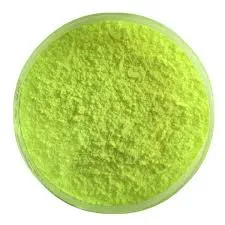The Significance of Polyacrylamide Polymers in Modern Applications
Polyacrylamide, a synthetic polymer derived from acrylamide monomers, has gained immense attention due to its versatile properties and applications across various industries
. This material is recognized for its ability to absorb water, making it particularly useful in scenarios where moisture retention and gel formation are vital. The unique characteristics of polyacrylamide polymers stem from their structure, which consists of long chains of repeating units that can interact with water molecules, creating a gel-like consistency that is relevant in both industrial and laboratory settings.One of the primary uses of polyacrylamide is in the field of water treatment. The polymer is an effective flocculant, which means it can facilitate the aggregation of suspended particles in water. This property is invaluable in the purification of drinking water and in wastewater treatment facilities, where it helps remove contaminants and improves the efficiency of sedimentation processes. By enhancing the settling of solid particles, polyacrylamide contributes to cleaner water, which is essential for public health and environmental protection.
In agriculture, polyacrylamide is utilized as a soil conditioner. The polymer helps retain soil moisture, which is particularly beneficial in arid regions where water conservation is critical. By improving soil structure and promoting better water retention, polyacrylamide can enhance crop yields and reduce the need for frequent irrigation, thereby conserving valuable water resources. The application of polyacrylamide in agriculture supports sustainable farming practices, crucial for feeding the growing global population.
polyacrylamide polymer

Polyacrylamide's role in biochemistry and molecular biology is also notable. It is commonly used in electrophoresis, a technique that separates biomolecules based on their size and charge. Polyacrylamide gels offer a controlled environment for analytes, enabling researchers to obtain high-resolution results during experiments. This application is vital in various fields, including genetics and proteomics, where understanding the behavior of DNA, RNA, and proteins is crucial for advancements in medicine and biotechnology.
Furthermore, polyacrylamide is employed in the oil and gas industry for enhanced oil recovery. The polymer improves the flow of crude oil through porous rock formations, increasing the efficiency of extraction processes. By optimizing oil recovery, polyacrylamide not only contributes to the economic viability of resources but also helps to mitigate environmental impacts associated with drilling and extraction activities.
Despite its advantages, the use of polyacrylamide also raises concerns regarding safety and environmental implications. Acrylamide, the monomer from which polyacrylamide is derived, is classified as a potential neurotoxin and carcinogen. Therefore, handling and disposal of polyacrylamide must be conducted with caution to minimize exposure to harmful substances.
In conclusion, polyacrylamide polymers play a critical role in numerous applications, from water treatment and agriculture to biochemistry and oil recovery. Their multifunctional properties make them an indispensable tool in addressing significant global challenges, including water scarcity, food security, and energy production. As research continues, further advancements in the safe and effective use of polyacrylamide will ensure its relevance in a rapidly evolving world.

